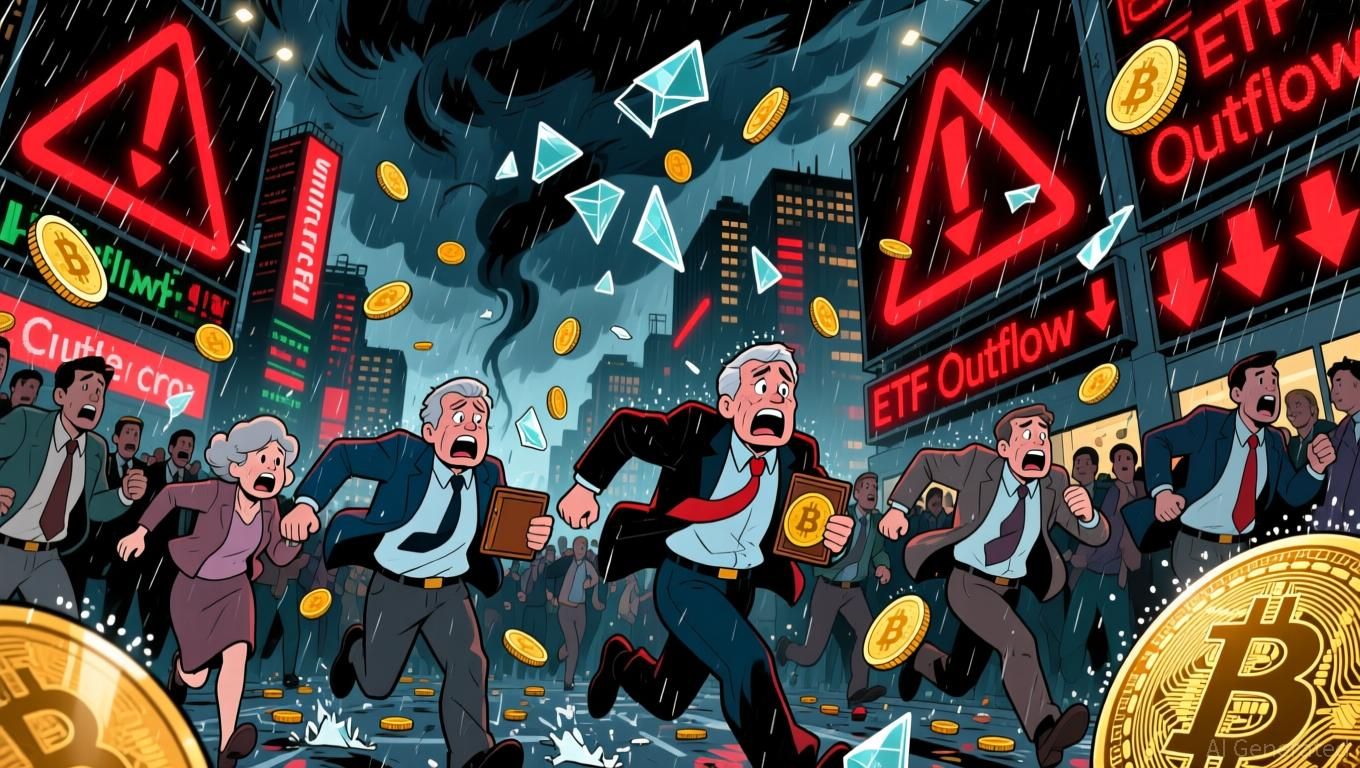The Unexpected Bitcoin Plunge: Analyzing the Factors That Triggered BTC’s Steep Decline in Late 2025
- Bitcoin's 2025 crash saw BTC drop from $126,198 to below $86,000 due to macroeconomic pressures and regulatory uncertainty. - Fed's tightening cycle, high inflation (2.99% CPI), and delayed rate cuts reduced liquidity for risk assets like crypto. - SEC's partial regulatory clarity and global crackdowns (China/EU/India) worsened investor uncertainty amid U.S. government shutdown. - Institutional outflows ($867M in 1 day) and 0.6 crypto-equity correlation amplified the crash as investors shifted to safer a
Macroeconomic Pressures: The Fed’s Tightening Grip
The Federal Reserve’s actions in late 2025 were a major factor in Bitcoin’s downturn. After a dovish move in September with a 25-basis-point rate cut, the Fed quickly shifted to a more hawkish approach, postponing further easing and triggering a liquidity squeeze for riskier assets.
Fiscal measures under the Trump administration added more complexity to the economic environment. Tax refunds helped lift GDP by 0.4% in early 2026, but
Regulatory Uncertainty: A Double-Edged Sword
Regulatory shifts in late 2025 further weighed on Bitcoin’s price. The SEC took steps to clarify crypto rules—such as issuing no-action letters for state-chartered banks to hold digital assets and relaxing DePIN token distribution requirements—
Globally, stricter regulations in major regions like China, the EU, and India added to the sell-off. While the data did not specify actions by individual countries,
Institutional Flight and Market Correlations
Institutional players in the crypto market played a significant part in deepening the crash.
Bitcoin’s price also showed strong links to traditional financial markets.
Conclusion: A Perfect Storm
The Bitcoin crash in late 2025 was fueled by a combination of the Fed’s tightening cycle, unresolved regulatory questions, and increased risk aversion among institutions. Although the SEC’s initiatives to encourage innovation brought some clarity, they were not enough to offset the larger macroeconomic challenges. For investors, this episode highlights the need to closely watch central bank moves and regulatory changes, as these will continue to influence Bitcoin’s path in the future.
Disclaimer: The content of this article solely reflects the author's opinion and does not represent the platform in any capacity. This article is not intended to serve as a reference for making investment decisions.
You may also like
Bitcoin Updates: As Investors Pull Out of Bitcoin ETFs, Altcoins See Increased Inflows During November Sell-Off
- U.S. bitcoin ETFs lost $1.22B in net outflows for the week ending Nov 21, extending a four-week negative streak with total November redemptions reaching $3.79B. - Bitcoin fell below $82,000 amid a 7-month low, triggering a $350B crypto market cap drop as Citi noted 3.4% price declines per $1B ETF outflow. - Solana and XRP ETFs bucked the trend with $300M and $410M inflows, attracting institutional interest despite broader market weakness. - Analysts warn of potential 50% further Bitcoin declines, while F
Bitcoin Updates: Bitcoin's Sharp Drop and ETF Outflows Trigger a Cycle of Self-Perpetuating Sell-Off in Crypto
- Bitcoin fell to a seven-month low amid $3.79B ETF outflows in November, with BlackRock's IBIT and Fidelity's FBTC accounting for 91% of redemptions. - Analysts cite profit-taking, leveraged position unwinding, and Fed rate uncertainty as key drivers, while NYDIG highlights structural shifts like collapsing stablecoin supply and DAT premiums. - Citi Research links $1B in ETF outflows to a 3.4% Bitcoin price drop, pushing Bitcoin dominance to 58% as investors shift to riskier altcoins. - Despite bearish sh

Markets Predict Fed Pivot, Central Bank Remains Silent

BIS sounds the alarm: Stablecoins could trigger a bond crash
